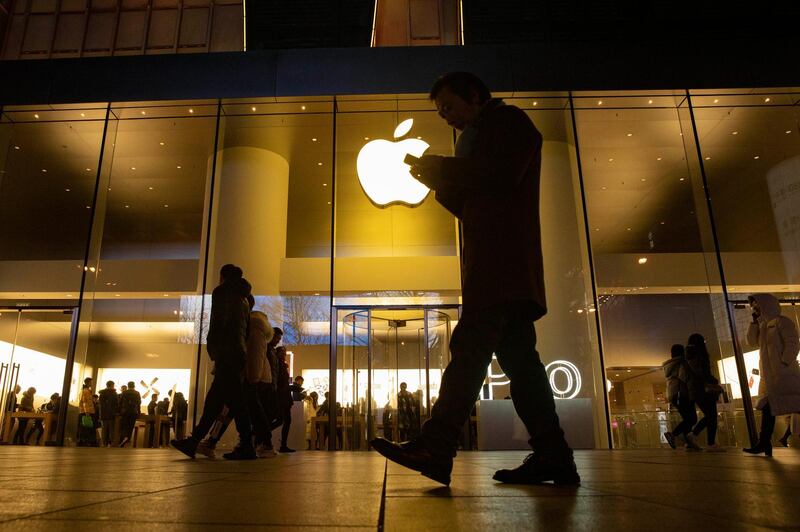Apple’s net profit increased 11.3 per cent year-on-year to a record $22.24 billion (Dh81.6bn) in the company's fiscal 2020 first quarter ended December 28, 2019, as earnings from iPhone and services surged.
This was the biggest quarterly profit for the Cupertino-based tech giant in history, beating analyst estimates and increasing the share price by 2.8 per cent and another 1.5 per cent in trading after-hours.
Sales of iPhone grew 7.6 per cent to $55.96bn in the three month period from the year earlier period. Strong sales in other parts of the business, such as services and wearables, meant the US technology company posted quarterly revenue of $91.82bn, almost $7.5bn more than the same period last year.
“We are thrilled to report Apple’s highest quarterly revenue ever, fuelled by strong demand for our iPhone 11 and iPhone 11 Pro models… and all-time records for services and wearables,” said Tim Cook, chief executive of Apple.
Launched in September, last year, the iPhone 11 was the company’s bestselling smartphone during the last three months of 2019, Mr Cook said.
The iPhone sales grew after falling in each of the previous four quarters. However, it still did not hit 2017’s record mark when the company sold $61bn worth of iPhones in the first quarter.
According to Apple, its global sales – outside the US market – accounted for nearly 55 per cent of the company's total first-quarter revenue.
The company gained some ground in the Greater China market (mainland China, Hong Kong and Taiwan), which has been a stronghold for the company in the past. Its input grew more than 3.1 per cent year-on-year in the first quarter of this year, contributing $13.58bn of total sales.
Analysts said a weaker Chinese economy was hitting Apple's bottom line. China's domestic market continues to be challenged as overall consumer spending on smartphones has fallen, said US-based International Data Corporation in one of its research notes. The world's second largest economy grew at the slowest pace in three decades last year.
Apple’s active installed base of devices grew in “each of our geographic segments and has now reached over 1.5 billion”, said Mr Cook, adding, “We see this as a powerful testament to the satisfaction, engagement and loyalty of our customers — and a great driver of our growth across the board.”
Total revenue from services grew nearly 17 per cent to $12.72bn, while revenue from wearables, home and accessories products increased almost 37 per cent to more than $10bn.
The company’s iPad revenues dipped 11.1 per cent to $5.98bn while Mac sales were down 3.5 per cent.
“Our very strong business performance drove an all-time net income record of $22.2bn and generated operating cash flow of $30.5bn,” said Luca Maestri, the company’s chief financial officer.
Apple returned nearly $25bn to shareholders during the quarter, as the company maintained its target of “reaching a net cash neutral position over time”, he added.
In its guidance for the second quarter of fiscal 2020, Apple forecast revenue in the range of $63bn to $67bn.
Apple is also expected to begin manufacturing a new lower-cost iPhone next month, as it aims to attract new customers and grab a wider share of the global smartphone market.
The new, cheaper phone is expected to go on sale as early as March.
A more affordable offering may help Apple compete with mid-range smartphones from rivals Samsung and Huawei while meeting its goal of 200 million shipments in 2020. The company is also expected to launch four 5G-enabled iPhones in September.
Overall, global smartphone shipments grew 3 per cent in the third quarter of last year, according to US market researcher Strategy Analytics. This was the first quarter of positive growth in the past two years.
South Korea's Samsung led the industry with a 21.3 per cent market share, followed by China's Huawei with an 18.2 per cent share and Apple with 12.4 per cent. Apple lost its number two market position to Huawei in April last year.








